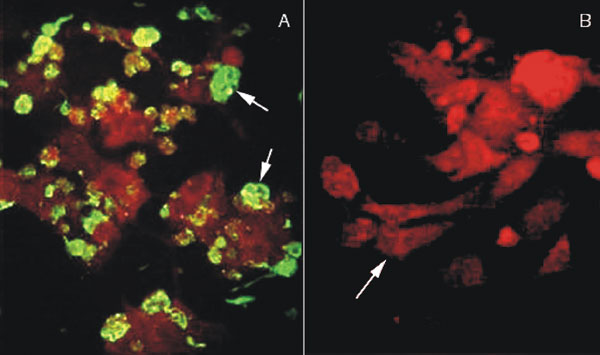Volume 8, Number 7—July 2002
Research
First Human Isolate of Hantavirus (Andes virus) in the Americas
Figure 1

Figure 1. Immunofluorescence assay (IFA) of Vero E6 cells infected with Chilean hantavirus CHI-7913 isolate. A, IFA with seropositive human sera from a Chilean HPS patient; arrow shows infected Vero E6 cells expressing hantavirus antigens. B, IFA with seronegative human sera from uninfected control; arrow shows the negative IFA of Vero E6 cells infected with the CHI-7913 isolate.
Page created: July 16, 2010
Page updated: July 16, 2010
Page reviewed: July 16, 2010
The conclusions, findings, and opinions expressed by authors contributing to this journal do not necessarily reflect the official position of the U.S. Department of Health and Human Services, the Public Health Service, the Centers for Disease Control and Prevention, or the authors' affiliated institutions. Use of trade names is for identification only and does not imply endorsement by any of the groups named above.